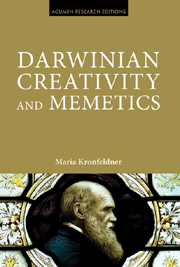Preface
Summary
Life constantly changes and so does culture. In life, it is genes, organisms, groups of organisms and species whose change is at issue. The respective ontology of culture is somewhat messier, but ideas, values, beliefs, patterns of behaviour, artefacts and groups of these units are often mentioned. Novelty in the biological realm is nowadays explained by evolution without any reference to a designer. Cultural novelty, by contrast, is explained with reference to designers par excellence. While organisms and species evolve, culture is created by humans and diffuses through their selective choices. Creativity, in its basic sense, is the human capacity to create new and valuable responses to challenges to which humans are exposed, or to which they expose themselves. Those responses that are overtly delivered and adopted by others become part of a certain culture. They spread. This is cultural diffusion. Since diffusion is a change in the frequency of certain cultural items, culture as a whole changes as a consequence of the dual process of creativity and diffusion. If a creative act builds on past innovations, creativity accumulates. The dual process of creativity and diffusion, iterated over many steps, is what we call cultural change or history. In sum, cultural change is explained by creativity and diffusion. But how can we in turn explain creativity and diffusion?
- Type
- Chapter
- Information
- Darwinian Creativity and Memetics , pp. vii - xPublisher: Acumen PublishingPrint publication year: 2011



